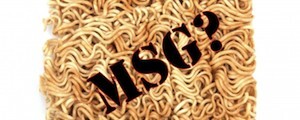Samelly Alejo: Finding clues through science
A middle school student in Massachusetts studies the effects of different chemicals on plant growth.

By: Molly Gasperini
Samelly Alejo is skipping math class. This bright, smiling eighth grader is not playing hooky though – she's been called from her calculus class for an interview as the featured scientist of The Journal of Emerging Investigators’ Spring 2013 season.
Samelly has just finished a yearlong science-writing course with JEI at Timilty Middle School, where her abstract was chosen as the best in the class. Her work focused on the effects that monosodium glutamate (also known as the umami food additive MSG) has on plant growth.
Samelly describes the additive as ubiquitous and delicious: “Everyone eats it every day. MSG increases the flavors in things so that’s why people use it. Like in Chinese food.”
However, upon discussion with her Massachusetts General Hospital graduate student mentor, this young scientist learned that eating MSG could have dangerous negative side effects.
She explained, “There’s research that says the MSG affected the growth of babies’ brains. So, I wanted to try to study this. I couldn’t use people so I used plants.”
Every other day, Samelly watered her plants with dissolved MSG, ethanol, soda water or regular water, then measured their growth. Soda water and ethanol both slowed plant growth a little, but the most obvious differences in growth resulted from MSG treatment.
”The one with MSG – it did not grow as much as the one with the water,” she described.
She was unsurprised by the results but concerned about the safety of consuming MSG. She hopes that her research can help to teach people about the dangers of unhealthy eating.
“[My research] should give them information about what they’re eating. They should not eat Chinese food that often,” Samelly commented.
Samelly is a sharp and enthusiastic young woman, with a near constant smile on her face. She laughs readily when I ask her about how her research has influenced her own perceptions of MSG.
“I don’t want to eat Chinese food-I’m kidding!” she joked. “But I won’t eat Chinese food really often.”
JEI’s middle school science writing program helped Samelly take her data from the plant to the paper. What Samelly appreciated most about the JEI writing program was learning skills that enabled her to better communicate her work.
“I could put it into my own words,” she praised.
She cites all of her past science teachers as helping to motivate her to work hard in science. Her eighth grade teacher especially helped her stay focused on the MSG project.
“She was always on me like, ‘You have to do this.’,” Samelly explained. “It really helped to have that motivator... Last year, I actually got to city wide in my science fair because of my teachers pushing me all the time.”
This eighth grader is no stranger to achievements in science. In each of her three years at Timilty, she has qualified for high levels of competition in the science fair. Her projects ranged from the chemistry of baking soda, to measuring how quickly candy bars dissolved in acidified water.
When she’s not conducting science research, Samelly loves spending time with her sisters Emelly and Samanta. Her mother went to college to be a psychologist, and Samelly hopes to follow in her footsteps and become either a general psychologist or FBI profiler.
“I really like solving problems,” Samelly described. “I like figuring people out. My experience in science could help me find the things that others would miss, like clues.”
Samelly is a fierce competitor outside of science as well. She is an avid squash player for a team at Northeastern that competed in a national championship last winter. Her dream is to attend college at the university with the top squash team in the country. “Which school might that be?” we asked her.
Samelly smiles bashfully: “Harvard!”
With her bright history of success, this young scientist is sure to join the Harvard crimson.
